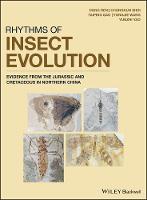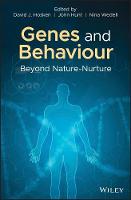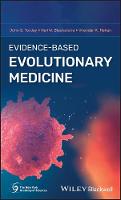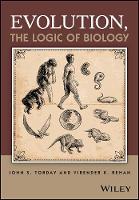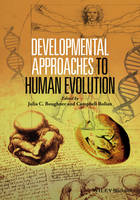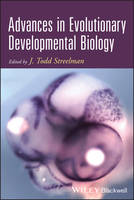Cell Biology
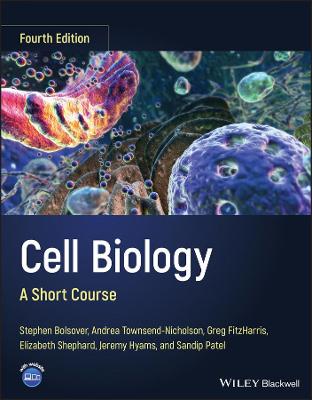 -15%
portes grátis
-15%
portes grátis
Cell Biology
A Short Course
Shephard, Elizabeth A.; Townsend-Nicholson, Andrea; Bolsover, Stephen R.; Hyams, Jeremy S.; Patel, Sandip; FitzHarris, Greg
John Wiley and Sons Ltd
03/2022
336
Mole
Inglês
9781119757764
15 a 20 dias
888
Acknowledgments, xiii
About the companion website, xv
Section 1: The Structure of the Cell, 1
1 A Look at Cells and Tissues, 3
Only Two Types of Cell, 3
Cell Division, 4
Viruses, 4
Origin of Eukaryotic Cells, 6
Cell Specialization in Animals, 8
Stem Cells and Tissue Replacement, 10
The Cell Wall, 11
Microscopes Reveal Cell Structure, 11
The Modern Light Microscope, 11
The Transmission Electron Microscope, 12
The Scanning Electron Microscope, 14
Fluorescence Microscopy, 14
Increasing the Resolution of Fluorescence Microscopes, 15
Fluorescent Proteins, 15
2 Membranes and Organelles, 21
Basic Properties of Cell Membranes, 21
Organelles Bounded by Double-Membrane Envelopes, 22
The Nucleus, 22
Mitochondria, 24
Organelles Bounded by Single Membranes, 24
Peroxisomes, 25
Endoplasmic Reticulum, 25
Golgi Apparatus, 25
Lysosomes, 25
The Connected Cell, 26
Organelle Junctions, 26
Cell Junctions, 26
Section 2: The Molecular Biology Of The Cell, 33
3 DNA Structure And The Genetic Code, 35
The Structure of DNA, 35
The DNA Molecule Is a Double Helix, 37
Hydrogen Bonds Form Between Base Pairs, 37
DNA Strands Are Antiparallel, 37
The Two DNA Strands Are Complementary, 39
DNA as the Genetic Material, 39
Packaging of DNA Molecules into Chromosomes, 39
Eukaryotic Chromosomes and Chromatin Structure, 39
Prokaryotic Chromosomes, 40
Plasmids, 41
Viruses, 42
The Genetic Code, 42
Amino Acids and Proteins, 42
Reading the Genetic Code, 42
Amino Acid Names Are Abbreviated, 44
The Code Is Degenerate but Unambiguous, 44
Start and Stop Codons and the Reading Frame, 45
The Code Is Nearly Universal, 45
Missense Mutations, 46
4 DNA As A Data Storage Medium, 51
DNA Replication, 51
The DNA Replication Fork, 51
Proteins Open up the DNA Double Helix During Replication, 51
DnaA Protein, 52
DnaB and DnaC Proteins, 52
Single-Stranded DNA-Binding Proteins, 52
Biochemistry of DNA Replication, 52
DNA Synthesis Requires an RNA Primer, 55
RNA Primers Are Removed, 55
The Self-Correcting DNA Polymerase, 55
Mismatch Repair Backs Up the Proofreading Mechanism, 55
DNA Repair after Replication, 56
Spontaneous and Chemically Induced Base Changes, 56
Repair Processes, 57
Gene Structure and Organization in Eukaryotes, 59
Introns and Exons - Additional Complexity in Eukaryotic Genes, 59
The Major Classes of Eukaryotic DNA, 60
Gene Nomenclature, 61
5 Transcription and the Control of Gene Expression, 67
Structure of RNA, 67
RNA Polymerase, 67
Gene Notation, 68
Bacterial RNA Synthesis, 69
Control of Bacterial Gene Expression, 71
Lac, an Inducible Operon, 71
Trp, a Repressible Operon, 74
Eukaryotic RNA Synthesis, 75
Messenger RNA Processing in Eukaryotes, 76
Control of Eukaryotic Gene Expression, 77
Glucocorticoids Cross the Plasma Membrane to Activate Transcription, 79
Noncoding RNAs and the Control of Eukaryotic Gene Expression, 80
Micro RNAs, 80
Long Noncoding RNAs, 81
Circular RNAs, 81
6 Manufacturing Protein, 85
Attachment of an Amino Acid to Its tRNA, 85
Transfer RNA, the Anticodon, and Wobble, 85
The Ribosome, 89
Bacterial Protein Synthesis, 89
Ribosome-Binding Site, 89
Chain Initiation, 90
Initiation Factor 2 Is a GTPase, 90
The 70S Initiation Complex, 91
Elongation of the Protein Chain in Bacteria, 92
The Polyribosome, 94
Termination of Protein Synthesis, 94
The Ribosome Is Recycled, 95
Eukaryotic Protein Synthesis Is a Little More Complex, 95
Antibiotics and Protein Synthesis, 97
Protein Destruction, 98
7 Protein Structure, 103
Naming Proteins, 103
Polymers of Amino Acids, 104
The Amino Acid Building Blocks, 104
The Unique Properties of Each Amino Acid, 107
Other Amino Acids Are Found in Nature, 109
The Three-Dimensional Structures of Proteins, 109
Hydrogen Bonds, 109
Electrostatic Interactions, 109
Van der Waals Forces, 109
Hydrophobic Interactions, 109
Disulfide Bonds, 109
Levels of Complexity, 110
The Primary Structure, 110
The Secondary Structure, 111
Tertiary Structure: Domains and Motifs, 114
Quaternary Structure: Assemblies of Protein Subunits, 118
Prosthetic Groups, 118
The Primary Structure Contains all the Information Necessary to Specify Higher-Level Structures, 119
Protein-Protein Interactions Underlie all of Cell Biology, 119
8 Recombinant DNA Technology and Genetic Engineering, 123
DNA Cloning, 123
Creating the Clone, 124
Introduction of Foreign DNA Molecules into Bacteria, 124
Genomic DNA Clones, 126
Uses of DNA Clones, 128
Southern Blotting, 129
In-Situ Hybridization, 130
Northern Blotting, 130
Production of Mammalian Proteins in Bacteria and Eukaryotic Cells, 130
Polymerase Chain Reaction, 132
DNA Sequencing, 133
"Omics", 135
Transcriptomics, 135
Microarrays, 135
RNA-Seq, 136
ChIP-Seq and Epigenomics, 136
Other "Omics", 137
Identifying the Gene Responsible for a Disease, 137
Reverse Genetics, 137
Transgenic and Knockout Mice, 137
RNA Interference (RNAi), 139
CRISPR/Cas9, 139
Ethics of DNA Testing for Inherited Disease, 140
Section 3: Cell Communication, 145
9 Carriers, Channels, And Voltages, 147
Carriers, 147
The Glucose Carrier, 149
The Sodium/Calcium Exchanger, 150
The Sodium/Potassium ATPase, 150
The Calcium ATPase, 151
The Potassium Gradient and the Resting Voltage, 152
Potassium Channels Make the Plasma Membrane Permeable to Potassium Ions, 152
Concentration Gradients and Electrical Voltage Can Balance, 154
The Action Potential, 156
The Pain Receptor Neuron, 156
The Voltage-Gated Sodium Channel, 158
The Sodium Action Potential, 158
The Strength of a Signal Is Coded by Action Potential Frequency, 159
Myelination and Rapid Action Potential Transmission, 161
10 Signalling Through Ions, 165
Calcium as a Signaling Ion, 165
Calcium Can Enter Cells from the Extracellular Medium, 165
Calcium Can Be Released from Organelles, 166
Processes Activated by Cytosolic Calcium Are Extremely Diverse, 167
Return of Calcium to Resting Levels, 169
Propagating the Signal, 170
Transmitters Are Released at Synapses, 170
Ligand-Gated Ion Channels Respond to
Transmitters, 170
Rapid Communication: From Neurons to Their Targets, 171
Inhibitory Transmission, 172
Signaling at the Neuromuscular Junction, 175
11 Signalling Through Enzymes, 179
G Protein-Coupled Receptors and Second Messengers, 179
G Protein-Coupled Receptors Are an Abundant Class of Cell Surface Receptors, 179
Inositol Trisphosphate Controls Secretion in the Exocrine Pancreas, 179
Cyclic Adenosine Monophosphate Helps Us Smell, 181
Receptor Tyrosine Kinases and the Map Kinase Cascade, 183
Growth Factors Can Trigger a Calcium Signal, 185
Akt and the Glucose Carrier: How Insulin Works, 185
Cytokine Receptors, 187
Signaling Through Proteolysis, 188
Wnt Proteins Signal Through Receptors that Prevent Proteolysis of Beta Catenin, 188
Low Oxygen Levels Are Sensed by Preventing Proteolysis of Hypoxia-Inducing Factor, 189
Intracellular Receptors, 190
Guanylate Cyclase Is a Receptor for Nitric Oxide, 190
Many Steroid Hormone Receptors Are Transcription Factors, 190
Crosstalk - Signaling Pathways or Signaling Webs?, 190
Signaling in the Control of Muscle Blood Supply, 192
The Blood Supply Is Under Local Control, 193
The Blood Supply Is Under Nervous System Control, 193
The Blood Supply Is Under Hormonal Control, 194
New Blood Vessels in Growing Muscle, 194
Section 4: The Mechanics Of The Cell, 199
12 Intracellular Trafficking, 201
Principles of Protein Transport, 201
Proteins Enter Organelles in Different Ways, 201
Vesicles Shuttle Proteins Around the Cell Through Fission and Fusion, 202
The Destination of a Protein Is Determined by Sorting Signals, 204
GTPases Are Master Regulators of Traffic, 205
Trafficking to the Endoplasmic Reticulum and Plasma Membrane, 205
Synthesis on the Rough Endoplasmic Reticulum, 205
Glycosylation: The Endoplasmic Reticulum and Golgi System, 206
Coatomer-Coated Vesicles, 207
Trans Golgi Network and Protein Secretion, 208
Trafficking to the Lysosome, 209
Endocytosis Is a Gateway into the Cell, 209
Clathrin-Coated Vesicles, 209
Delivery of Enzymes to Lysosomes, 209
Lysosomes Degrade Proteins from both Outside and Inside of the Cell: Autophagy, 210
Trafficking to and from the Nucleus, 210
The Nuclear Pore Complex, 211
Gated Transport Through the Nuclear Pore, 212
GTPases in Nuclear Transport, 212
Trafficking to Other Organelles, 212
Transport to Mitochondria, 212
Transport to Peroxisomes, 215
13 CELLULAR SCAFFOLDING, 219
Microtubules, 219
Functions of Microtubules, 222
Intracellular Transport and Cellular Architecture, 222
Cell Movement by Cilia and Flagella, 223
Microfilaments, 225
Functions of Microfilaments, 226
Muscle Contraction, 226
Microfilament-Based Cell Migration, 227
Intermediate Filaments, 228
Functions of Intermediate Filaments, 229
Anchoring Cell Junctions, 229
The Nuclear Lamina, 230
14 Controlling Cell Number, 233
M-phase, 235
Mitosis, 235
Cytokinesis, 236
Control of the Cell Cycle, 238
The Cell Cycle Is Driven by Kinase Activities, 238
Checkpoints Tell the Cell Cycle When to Stop and When to Go, 239
The Mitotic Checkpoint Determines When the Cell Cycle Ends, 241
Cell Cycle Control and Cancer, 241
Meiosis and Fertilization, 242
Meiosis, 242
Crossing Over and Linkage, 245
Cell Death, 246
Cell Stress Activates the Intrinsic Apoptotic Pathway, 246
Communication with the External Environment Can Activate the Extrinsic Apoptotic Pathway, 247
Default Death: Apoptosis as a Result of Absence of Growth Factors, 248
Section 5 Case Study, 253
15 Case Study: Cystic Fibrosis, 255
Cystic Fibrosis Is a Severe Genetic Disease, 255
The Fundamental Lesion in Cystic Fibrosis Lies in Chloride Transport, 256
Cloning the CFTR Gene, 256
The CFTR Gene Codes for a Chloride Ion Channel, 257
Replacing or Repairing the Gene, 259
Tailoring Treatment to the Patient's Lesion, 260
New Treatments for CF, 261
Diagnostic Tests for CF, 261
Prenatal implantation diagnosis for CF, 262
Conclusion, 262
Answers to Review Questions, 265
Glossary, 273
Index, 307
Acknowledgments, xiii
About the companion website, xv
Section 1: The Structure of the Cell, 1
1 A Look at Cells and Tissues, 3
Only Two Types of Cell, 3
Cell Division, 4
Viruses, 4
Origin of Eukaryotic Cells, 6
Cell Specialization in Animals, 8
Stem Cells and Tissue Replacement, 10
The Cell Wall, 11
Microscopes Reveal Cell Structure, 11
The Modern Light Microscope, 11
The Transmission Electron Microscope, 12
The Scanning Electron Microscope, 14
Fluorescence Microscopy, 14
Increasing the Resolution of Fluorescence Microscopes, 15
Fluorescent Proteins, 15
2 Membranes and Organelles, 21
Basic Properties of Cell Membranes, 21
Organelles Bounded by Double-Membrane Envelopes, 22
The Nucleus, 22
Mitochondria, 24
Organelles Bounded by Single Membranes, 24
Peroxisomes, 25
Endoplasmic Reticulum, 25
Golgi Apparatus, 25
Lysosomes, 25
The Connected Cell, 26
Organelle Junctions, 26
Cell Junctions, 26
Section 2: The Molecular Biology Of The Cell, 33
3 DNA Structure And The Genetic Code, 35
The Structure of DNA, 35
The DNA Molecule Is a Double Helix, 37
Hydrogen Bonds Form Between Base Pairs, 37
DNA Strands Are Antiparallel, 37
The Two DNA Strands Are Complementary, 39
DNA as the Genetic Material, 39
Packaging of DNA Molecules into Chromosomes, 39
Eukaryotic Chromosomes and Chromatin Structure, 39
Prokaryotic Chromosomes, 40
Plasmids, 41
Viruses, 42
The Genetic Code, 42
Amino Acids and Proteins, 42
Reading the Genetic Code, 42
Amino Acid Names Are Abbreviated, 44
The Code Is Degenerate but Unambiguous, 44
Start and Stop Codons and the Reading Frame, 45
The Code Is Nearly Universal, 45
Missense Mutations, 46
4 DNA As A Data Storage Medium, 51
DNA Replication, 51
The DNA Replication Fork, 51
Proteins Open up the DNA Double Helix During Replication, 51
DnaA Protein, 52
DnaB and DnaC Proteins, 52
Single-Stranded DNA-Binding Proteins, 52
Biochemistry of DNA Replication, 52
DNA Synthesis Requires an RNA Primer, 55
RNA Primers Are Removed, 55
The Self-Correcting DNA Polymerase, 55
Mismatch Repair Backs Up the Proofreading Mechanism, 55
DNA Repair after Replication, 56
Spontaneous and Chemically Induced Base Changes, 56
Repair Processes, 57
Gene Structure and Organization in Eukaryotes, 59
Introns and Exons - Additional Complexity in Eukaryotic Genes, 59
The Major Classes of Eukaryotic DNA, 60
Gene Nomenclature, 61
5 Transcription and the Control of Gene Expression, 67
Structure of RNA, 67
RNA Polymerase, 67
Gene Notation, 68
Bacterial RNA Synthesis, 69
Control of Bacterial Gene Expression, 71
Lac, an Inducible Operon, 71
Trp, a Repressible Operon, 74
Eukaryotic RNA Synthesis, 75
Messenger RNA Processing in Eukaryotes, 76
Control of Eukaryotic Gene Expression, 77
Glucocorticoids Cross the Plasma Membrane to Activate Transcription, 79
Noncoding RNAs and the Control of Eukaryotic Gene Expression, 80
Micro RNAs, 80
Long Noncoding RNAs, 81
Circular RNAs, 81
6 Manufacturing Protein, 85
Attachment of an Amino Acid to Its tRNA, 85
Transfer RNA, the Anticodon, and Wobble, 85
The Ribosome, 89
Bacterial Protein Synthesis, 89
Ribosome-Binding Site, 89
Chain Initiation, 90
Initiation Factor 2 Is a GTPase, 90
The 70S Initiation Complex, 91
Elongation of the Protein Chain in Bacteria, 92
The Polyribosome, 94
Termination of Protein Synthesis, 94
The Ribosome Is Recycled, 95
Eukaryotic Protein Synthesis Is a Little More Complex, 95
Antibiotics and Protein Synthesis, 97
Protein Destruction, 98
7 Protein Structure, 103
Naming Proteins, 103
Polymers of Amino Acids, 104
The Amino Acid Building Blocks, 104
The Unique Properties of Each Amino Acid, 107
Other Amino Acids Are Found in Nature, 109
The Three-Dimensional Structures of Proteins, 109
Hydrogen Bonds, 109
Electrostatic Interactions, 109
Van der Waals Forces, 109
Hydrophobic Interactions, 109
Disulfide Bonds, 109
Levels of Complexity, 110
The Primary Structure, 110
The Secondary Structure, 111
Tertiary Structure: Domains and Motifs, 114
Quaternary Structure: Assemblies of Protein Subunits, 118
Prosthetic Groups, 118
The Primary Structure Contains all the Information Necessary to Specify Higher-Level Structures, 119
Protein-Protein Interactions Underlie all of Cell Biology, 119
8 Recombinant DNA Technology and Genetic Engineering, 123
DNA Cloning, 123
Creating the Clone, 124
Introduction of Foreign DNA Molecules into Bacteria, 124
Genomic DNA Clones, 126
Uses of DNA Clones, 128
Southern Blotting, 129
In-Situ Hybridization, 130
Northern Blotting, 130
Production of Mammalian Proteins in Bacteria and Eukaryotic Cells, 130
Polymerase Chain Reaction, 132
DNA Sequencing, 133
"Omics", 135
Transcriptomics, 135
Microarrays, 135
RNA-Seq, 136
ChIP-Seq and Epigenomics, 136
Other "Omics", 137
Identifying the Gene Responsible for a Disease, 137
Reverse Genetics, 137
Transgenic and Knockout Mice, 137
RNA Interference (RNAi), 139
CRISPR/Cas9, 139
Ethics of DNA Testing for Inherited Disease, 140
Section 3: Cell Communication, 145
9 Carriers, Channels, And Voltages, 147
Carriers, 147
The Glucose Carrier, 149
The Sodium/Calcium Exchanger, 150
The Sodium/Potassium ATPase, 150
The Calcium ATPase, 151
The Potassium Gradient and the Resting Voltage, 152
Potassium Channels Make the Plasma Membrane Permeable to Potassium Ions, 152
Concentration Gradients and Electrical Voltage Can Balance, 154
The Action Potential, 156
The Pain Receptor Neuron, 156
The Voltage-Gated Sodium Channel, 158
The Sodium Action Potential, 158
The Strength of a Signal Is Coded by Action Potential Frequency, 159
Myelination and Rapid Action Potential Transmission, 161
10 Signalling Through Ions, 165
Calcium as a Signaling Ion, 165
Calcium Can Enter Cells from the Extracellular Medium, 165
Calcium Can Be Released from Organelles, 166
Processes Activated by Cytosolic Calcium Are Extremely Diverse, 167
Return of Calcium to Resting Levels, 169
Propagating the Signal, 170
Transmitters Are Released at Synapses, 170
Ligand-Gated Ion Channels Respond to
Transmitters, 170
Rapid Communication: From Neurons to Their Targets, 171
Inhibitory Transmission, 172
Signaling at the Neuromuscular Junction, 175
11 Signalling Through Enzymes, 179
G Protein-Coupled Receptors and Second Messengers, 179
G Protein-Coupled Receptors Are an Abundant Class of Cell Surface Receptors, 179
Inositol Trisphosphate Controls Secretion in the Exocrine Pancreas, 179
Cyclic Adenosine Monophosphate Helps Us Smell, 181
Receptor Tyrosine Kinases and the Map Kinase Cascade, 183
Growth Factors Can Trigger a Calcium Signal, 185
Akt and the Glucose Carrier: How Insulin Works, 185
Cytokine Receptors, 187
Signaling Through Proteolysis, 188
Wnt Proteins Signal Through Receptors that Prevent Proteolysis of Beta Catenin, 188
Low Oxygen Levels Are Sensed by Preventing Proteolysis of Hypoxia-Inducing Factor, 189
Intracellular Receptors, 190
Guanylate Cyclase Is a Receptor for Nitric Oxide, 190
Many Steroid Hormone Receptors Are Transcription Factors, 190
Crosstalk - Signaling Pathways or Signaling Webs?, 190
Signaling in the Control of Muscle Blood Supply, 192
The Blood Supply Is Under Local Control, 193
The Blood Supply Is Under Nervous System Control, 193
The Blood Supply Is Under Hormonal Control, 194
New Blood Vessels in Growing Muscle, 194
Section 4: The Mechanics Of The Cell, 199
12 Intracellular Trafficking, 201
Principles of Protein Transport, 201
Proteins Enter Organelles in Different Ways, 201
Vesicles Shuttle Proteins Around the Cell Through Fission and Fusion, 202
The Destination of a Protein Is Determined by Sorting Signals, 204
GTPases Are Master Regulators of Traffic, 205
Trafficking to the Endoplasmic Reticulum and Plasma Membrane, 205
Synthesis on the Rough Endoplasmic Reticulum, 205
Glycosylation: The Endoplasmic Reticulum and Golgi System, 206
Coatomer-Coated Vesicles, 207
Trans Golgi Network and Protein Secretion, 208
Trafficking to the Lysosome, 209
Endocytosis Is a Gateway into the Cell, 209
Clathrin-Coated Vesicles, 209
Delivery of Enzymes to Lysosomes, 209
Lysosomes Degrade Proteins from both Outside and Inside of the Cell: Autophagy, 210
Trafficking to and from the Nucleus, 210
The Nuclear Pore Complex, 211
Gated Transport Through the Nuclear Pore, 212
GTPases in Nuclear Transport, 212
Trafficking to Other Organelles, 212
Transport to Mitochondria, 212
Transport to Peroxisomes, 215
13 CELLULAR SCAFFOLDING, 219
Microtubules, 219
Functions of Microtubules, 222
Intracellular Transport and Cellular Architecture, 222
Cell Movement by Cilia and Flagella, 223
Microfilaments, 225
Functions of Microfilaments, 226
Muscle Contraction, 226
Microfilament-Based Cell Migration, 227
Intermediate Filaments, 228
Functions of Intermediate Filaments, 229
Anchoring Cell Junctions, 229
The Nuclear Lamina, 230
14 Controlling Cell Number, 233
M-phase, 235
Mitosis, 235
Cytokinesis, 236
Control of the Cell Cycle, 238
The Cell Cycle Is Driven by Kinase Activities, 238
Checkpoints Tell the Cell Cycle When to Stop and When to Go, 239
The Mitotic Checkpoint Determines When the Cell Cycle Ends, 241
Cell Cycle Control and Cancer, 241
Meiosis and Fertilization, 242
Meiosis, 242
Crossing Over and Linkage, 245
Cell Death, 246
Cell Stress Activates the Intrinsic Apoptotic Pathway, 246
Communication with the External Environment Can Activate the Extrinsic Apoptotic Pathway, 247
Default Death: Apoptosis as a Result of Absence of Growth Factors, 248
Section 5 Case Study, 253
15 Case Study: Cystic Fibrosis, 255
Cystic Fibrosis Is a Severe Genetic Disease, 255
The Fundamental Lesion in Cystic Fibrosis Lies in Chloride Transport, 256
Cloning the CFTR Gene, 256
The CFTR Gene Codes for a Chloride Ion Channel, 257
Replacing or Repairing the Gene, 259
Tailoring Treatment to the Patient's Lesion, 260
New Treatments for CF, 261
Diagnostic Tests for CF, 261
Prenatal implantation diagnosis for CF, 262
Conclusion, 262
Answers to Review Questions, 265
Glossary, 273
Index, 307


